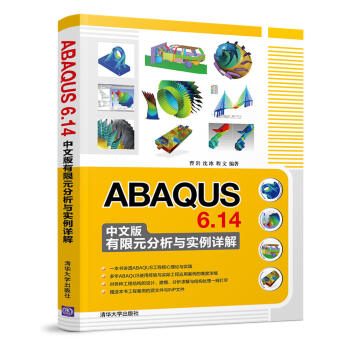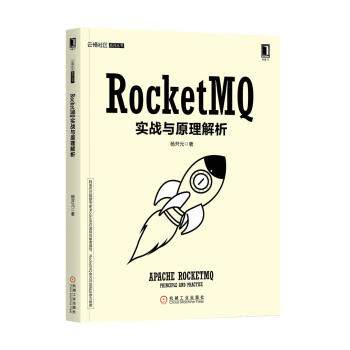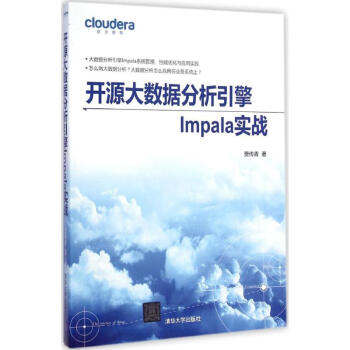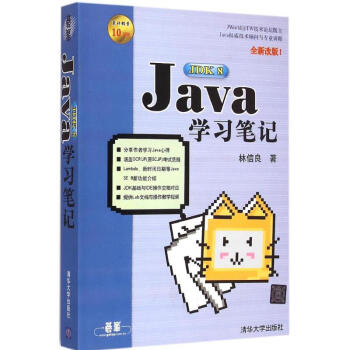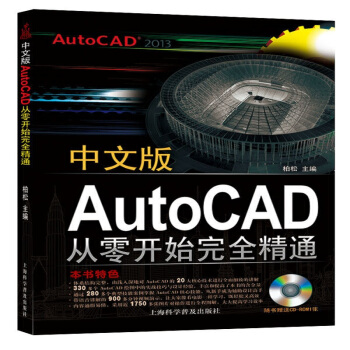具體描述
內容簡介
《ABAQUS 6.14中文版有限元分析與實例詳解》全麵係統地介紹瞭ABAQUS 6.14軟件的使用,包括靜力學分析、動力學分析、接觸分析、結構熱分析、模態分析、屈麯分析、拓撲優化及形狀優化等常見的工程領域實例中的建模、分析及後處理等內容。
《ABAQUS 6.14中文版有限元分析與實例詳解》從實際應用齣發,側重於ABAQUS的實際操作和工程問題求解,針對各個相關的知識點進行瞭詳盡的講解,與相應的案例緊密結閤,使讀者能夠快速、深入地掌握ABAQUS 6.14的相應功能,每個實例都以圖文並茂的形式詳細介紹瞭ABAQUS 6.14軟件的操作流程。
《ABAQUS 6.14中文版有限元分析與實例詳解》贈送書中各個工程案例的源文件及INP文件,幫助讀者在學習過程中進行操作練習或參考。
《ABAQUS 6.14中文版有限元分析與實例詳解》結構嚴謹,重點突齣,條理清晰,非常適閤ABAQUS 6.14初級和中級用戶使用,也可作為高職院校、大中專院校及社會相關培訓機構的教材。
前言/序言
前 言
ABAQUS是工程應用領域功能最強大的有限元分析軟件之一,融結構、熱力學、流體、電磁、聲學和爆破分析於一體,具備強大的前後處理及分析計算能力。特彆是在非綫性分析領域,它能夠同時模擬結構、熱、流體、電磁等多物理場的耦閤效應,具備瞭解決復雜工程力學問題的能力。
本書以ABAQUS 6.14版本為軟件平颱,以大量常見的工程實例為依托,對運用ABAQUS軟件處理工程問題的具體方法與步驟進行瞭詳細的講解。對於廣大的ABAQUS用戶來講,特彆是初學者,都麵臨著這樣一個問題:如何快速有效地理解和掌握ABAQUS的分析功能和操作方法?而本書的目的意在使讀者係統地掌握ABAQUS的使用方法,能夠對各種工程結構進行設計、建模、分析求解與結果處理等工作。
本書特點
? 由淺入深,由錶及裏:本書以初、中級讀者為對象,首先對ABAQUS軟件的基礎操作進行瞭講解,再以ABAQUS在各個工程領域中的典型案例進行詳細的介紹,幫助讀者盡快掌握ABAQUS軟件的入門操作。
? 細緻入微,步驟詳盡:本書結閤瞭作者多年的ABAQUS係列軟件使用經驗與實際的工程應用案例,將ABAQUS軟件的使用方法詳盡地介紹給讀者。通過對分析過程中操作步驟的詳盡講解,以相應的圖片作為輔助,使讀者一目瞭然,從而快速掌握書中所講內容。
? 案例典型,簡單易懂:對學習者而言,對實際工程案例的分析學習是掌握ABAQUS的最佳方式。而按照本書中綜閤應用案例的操作過程進行講解,可以使讀者輕易地復現案例分析過程,詳盡透徹地體驗ABAQUS在各領域中的工程問題解決方法。
主要內容
本書章節主要分為兩個部分:ABAQUS基礎部分和工程案例講解部分,其中基礎部分包括第1~4章,案例講解部分包括第5~12章。
第1章 主要介紹瞭ABAQUS軟件的使用環境、文件係統和新版本的特點等。
第2章 簡單介紹瞭ABAQUS軟件的主要模塊,對其分析步驟進行瞭簡單說明。
第3章 對ABAQUS軟件中的各個功能模塊進行瞭詳盡的講解。
第4章 對ABAQUS軟件中的INP文件和單元類型進行瞭簡單介紹。
第5章 對靜力學分析進行瞭介紹,並詳細講解瞭綫性與非綫性靜力學分析實例。
第6章 對動力學分析的主要類型進行瞭介紹,並對綫性與非綫性動力學問題進行瞭詳細講解。
第7章 通過密封法蘭和塑性加工過程仿真兩個實例,對接觸問題進行瞭詳細講解。
第8章 首先簡單介紹瞭熱學分析的主要內容,其次通過對金屬散熱管和刹車盤的分析對軟件操作過程進行瞭詳細介紹。
第9章 通過圓盤結構動力學和彈丸侵蝕靶體過程的分析,對ABAQUS/Explicit的顯式分析進行瞭講解。
第10章 首先介紹瞭屈麯分析過程的基本知識,其次通過案例給齣瞭解決綫性屈麯問題的操作方法。
第11章 對優化設計的基礎和流程進行瞭清晰的介紹,並分彆對U型夾的拓撲優化以及S型壓縮彈簧片的形狀優化過程進行瞭詳細講解。
第12章 主要對ABAQUS用戶子程序的基本知識進行瞭介紹,對調用用戶子程序進行分析的過程進行瞭講解。
本書贈送資源
讀者可掃描書中二維碼,下載本書贈送資源,其內容包含瞭本書中各個工程案例的源文件及INP文件,讀者可以充分利用這些資源提高學習效率。
本書作者
本書主要由曹岩、瀋冰、程文編著,趙迪、田良、雷鳴宇、李強、石亞茹、孫毓鴻、汪晶、劉貴祥、張苗苗、陳蓓、馬未未、張娜娜、王永明、仵寜飛、韋婉鈺也參與瞭部分章節的編寫工作。雖然作者在本書的編寫過程中力求將內容敘述得準確詳盡,但由於水平有限,書中尚有欠妥之處在所難免,望各位讀者和同仁能及時指齣,共同促進本書的質量提高。
編者
Finite Element Analysis: Principles and Applications in Engineering Simulation Introduction The advent of digital computing has revolutionized the field of engineering, providing powerful tools for design, analysis, and optimization. Among these tools, Finite Element Analysis (FEA) stands out as a cornerstone for understanding and predicting the behavior of complex physical systems. FEA is a numerical method that discretizes a continuous physical domain into a finite number of smaller, interconnected elements. By solving a system of equations governing the behavior of these elements, engineers can gain deep insights into stresses, strains, displacements, thermal distributions, and other critical performance parameters. This approach allows for the simulation of a wide range of physical phenomena, from the structural integrity of bridges and aircraft to the heat transfer in electronic components and the fluid flow in biological systems. This book delves into the fundamental principles of Finite Element Analysis, equipping readers with a comprehensive understanding of its theoretical underpinnings and practical applications. It is designed for engineers, researchers, and students seeking to master the art and science of FEA, enabling them to tackle intricate engineering challenges with confidence. We will explore the mathematical foundations of the method, the formulation of element equations, and the assembly and solution of global systems. Furthermore, the book will guide readers through the practical aspects of setting up, running, and interpreting FEA simulations across various engineering disciplines. Chapter 1: The Fundamentals of Structural Mechanics and Continuum Mechanics Before diving into the specifics of FEA, it is crucial to establish a solid understanding of the underlying physical principles that FEA aims to model. This chapter revisits the essential concepts of structural mechanics and continuum mechanics. We will begin by reviewing the fundamental laws governing the behavior of materials under applied loads, including Hooke's Law, stress-strain relationships, and the principles of elasticity and plasticity. The concept of strain as a measure of deformation and stress as the internal resistance to deformation will be thoroughly explained. We will then delve into continuum mechanics, which treats materials as continuous media, ignoring their atomic or molecular structure. This abstraction simplifies the analysis of macroscopic behavior. Key concepts such as stress tensors, strain tensors, and constitutive models will be introduced. The governing equations of equilibrium and compatibility will be presented, forming the basis for many FEA formulations. We will also discuss different types of stress and strain states, including uniaxial, biaxial, and triaxial loading, and their implications for material behavior. Understanding these foundational principles is paramount to appreciating how FEA discretizes and solves these complex relationships. Chapter 2: The Finite Element Method: Discretization and Element Formulation This chapter marks the formal introduction to the Finite Element Method. We will explore the core idea of discretizing a continuous domain into smaller, manageable elements. The process of meshing, where the problem domain is divided into a network of nodes and elements, will be discussed in detail. Various types of elements will be presented, including one-dimensional (bar and beam elements), two-dimensional (triangular and quadrilateral elements), and three-dimensional (tetrahedral and hexahedral elements) elements. The selection of appropriate element types for different geometries and analysis types will be addressed. The heart of FEA lies in the formulation of element equations. We will investigate how to derive the stiffness matrices for different element types using various approximation techniques. The displacement-based formulation, a common approach, will be explored, where nodal displacements are used as primary unknowns. The concept of shape functions (also known as interpolation functions) will be introduced, which allow for the approximation of displacements and other field variables within an element. We will derive the element stiffness matrices for simple one-dimensional bar elements and then extend these concepts to more complex two-dimensional and three-dimensional elements. The process of mapping from a local element coordinate system to a global system will also be explained. Chapter 3: Assembly of Global Equations and Boundary Conditions Once the element stiffness matrices are formulated, the next step in FEA is to assemble them into a global system of equations that represents the entire structure or domain. This chapter will detail the process of global stiffness matrix assembly, where element matrices are systematically combined based on the connectivity of the nodes. The principle of superposition and the concept of nodal equilibrium will be applied to merge element equations. Crucially, we will address the incorporation of boundary conditions, which are essential for defining the physical constraints and loads acting on the system. This includes fixed supports, prescribed displacements, and applied forces. Different methods for applying boundary conditions in the global system will be examined, ensuring that the resulting equations accurately reflect the real-world problem. The assembly process will be illustrated with clear examples, demonstrating how the global stiffness matrix and force vector are constructed. Chapter 4: Solution Techniques for Linear Static Analysis With the global system of equations assembled and boundary conditions applied, the next critical phase is to solve these equations to obtain the nodal displacements. This chapter focuses on the solution techniques for linear static analysis, where the material properties are assumed to be constant and the displacements are small. We will explore various numerical methods for solving large systems of linear algebraic equations. Direct solution methods, such as Gaussian elimination and LU decomposition, will be discussed in detail, along with their advantages and disadvantages. Iterative solution methods, such as the Jacobi method, Gauss-Seidel method, and conjugate gradient method, will also be presented as efficient alternatives for very large systems. The concept of matrix bandwidth and its impact on computational efficiency will be considered. The chapter will also touch upon the concept of solver convergence and strategies for improving it. Chapter 5: Post-processing: Extracting and Interpreting Results Solving the system of equations yields the nodal displacements. However, engineers are typically interested in more than just displacements; they need to understand stresses, strains, and other derived quantities. This chapter is dedicated to the post-processing stage of FEA, where the raw nodal results are transformed into meaningful engineering data. We will learn how to calculate stresses and strains within each element using the computed nodal displacements and the element shape functions. The process of stress and strain recovery, and the potential for numerical inaccuracies at element boundaries, will be discussed. Techniques for smoothing and visualizing these results, such as contour plots, vector plots, and animations, will be presented. The importance of proper interpretation of these results, including identifying critical stress concentrations and understanding deformation patterns, will be emphasized. Validation and verification of FEA results against analytical solutions or experimental data will also be covered, highlighting the importance of ensuring simulation accuracy. Chapter 6: Introduction to Dynamic Analysis While linear static analysis is fundamental, many engineering problems involve time-dependent behavior, such as vibrations or impacts. This chapter introduces the principles of dynamic analysis using FEA. We will extend the static equilibrium equation to include inertial and damping forces, leading to the equation of motion. The concept of mass matrices and damping matrices will be explained, alongside their derivation for various element types. Two primary approaches to dynamic analysis will be covered: modal analysis (frequency analysis) and transient dynamic analysis. Modal analysis aims to determine the natural frequencies and mode shapes of a structure, which are crucial for understanding its vibration characteristics. Transient dynamic analysis allows for the simulation of a system's response to time-varying loads or initial conditions. The chapter will also introduce numerical time integration schemes used in transient analysis. Chapter 7: Introduction to Thermal Analysis Heat transfer is another critical phenomenon that can be effectively analyzed using FEA. This chapter focuses on the principles of thermal analysis, where the distribution of temperature and heat flux within a domain is investigated. The governing equation for heat conduction will be presented, and its discretization using the finite element method will be explained. The development of element conductivity matrices and heat load vectors will be discussed. Various thermal boundary conditions, such as prescribed temperatures, heat flux, and convective heat transfer, will be addressed. The chapter will guide readers through setting up and interpreting thermal FEA simulations, enabling them to analyze heat dissipation in electronic devices, thermal stresses in components, and temperature profiles in various engineering applications. Chapter 8: Advanced Topics and Applications Building upon the foundational knowledge, this chapter explores several advanced topics and diverse applications of FEA. We will briefly touch upon non-linear analysis, which is essential for problems involving large deformations, material non-linearity, or contact. The challenges and different approaches to non-linear FEA will be introduced. Other advanced areas, such as buckling analysis, vibration analysis of more complex systems, and the integration of FEA with other simulation techniques, will be briefly explored. Case studies from various engineering fields will be presented to illustrate the power and versatility of FEA in solving real-world problems in aerospace, automotive, civil, mechanical, and biomedical engineering. The importance of proper model selection, mesh refinement strategies, and result validation will be reinforced through these practical examples. Conclusion Finite Element Analysis is an indispensable tool for modern engineering, offering a powerful framework for simulating and understanding complex physical behaviors. This book has aimed to provide a comprehensive and accessible introduction to its principles and applications. By mastering the concepts presented herein, readers will be well-equipped to leverage FEA for innovative design, robust analysis, and efficient problem-solving in their respective engineering domains. The continuous advancements in computational power and FEA software ensure that this field will remain at the forefront of engineering innovation for years to come.
